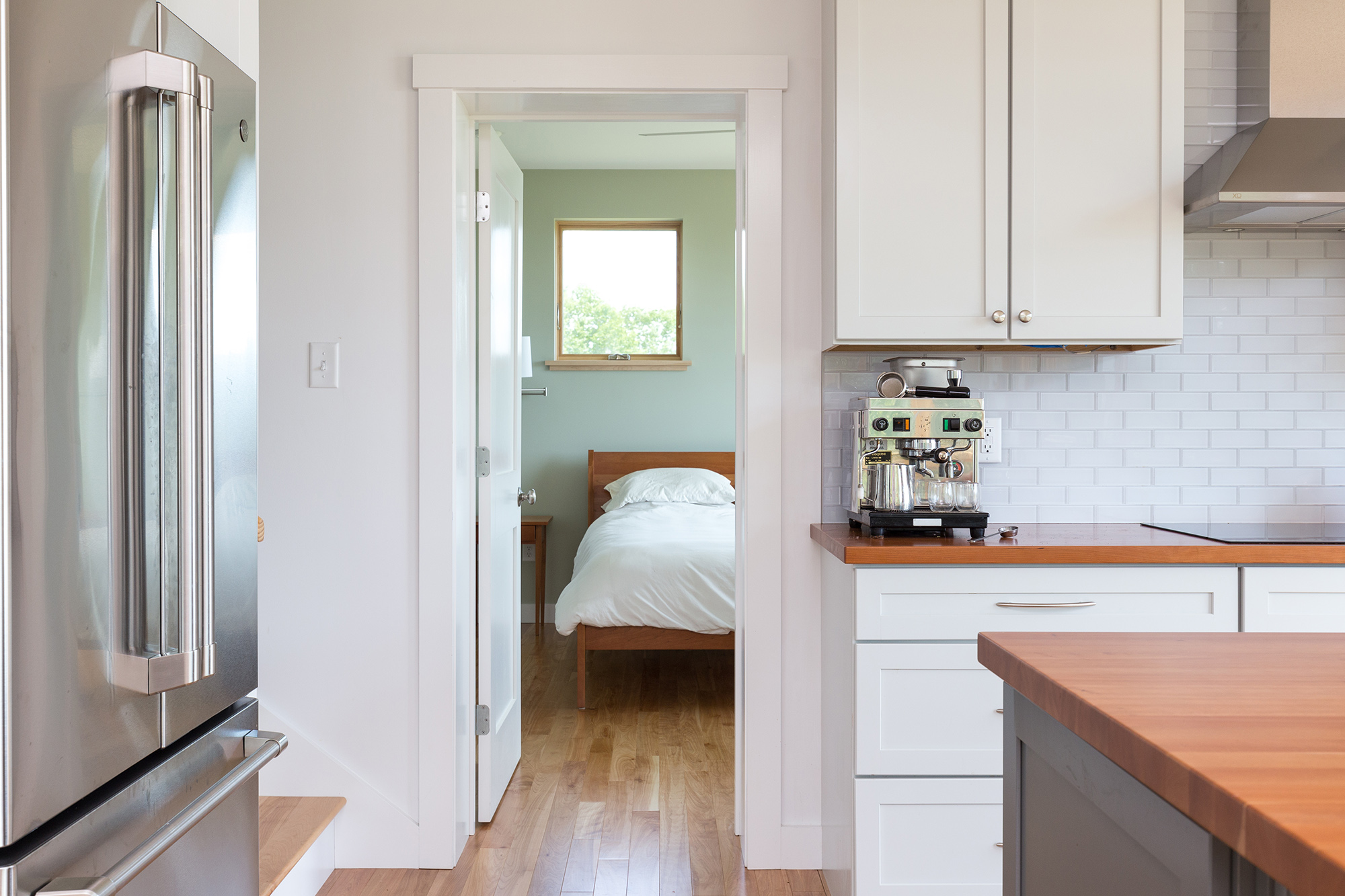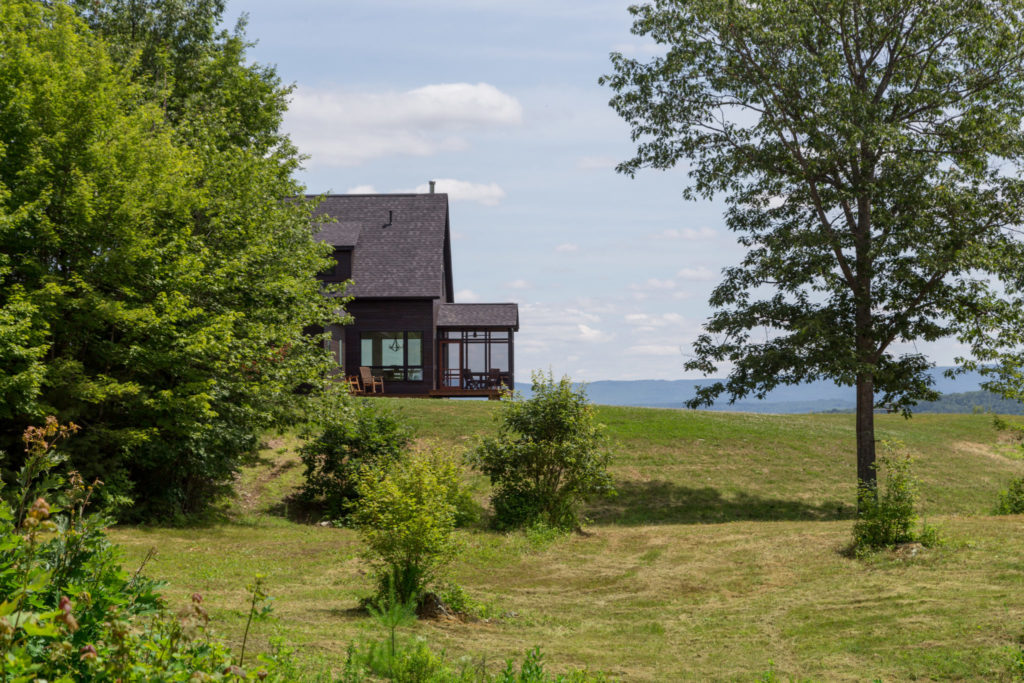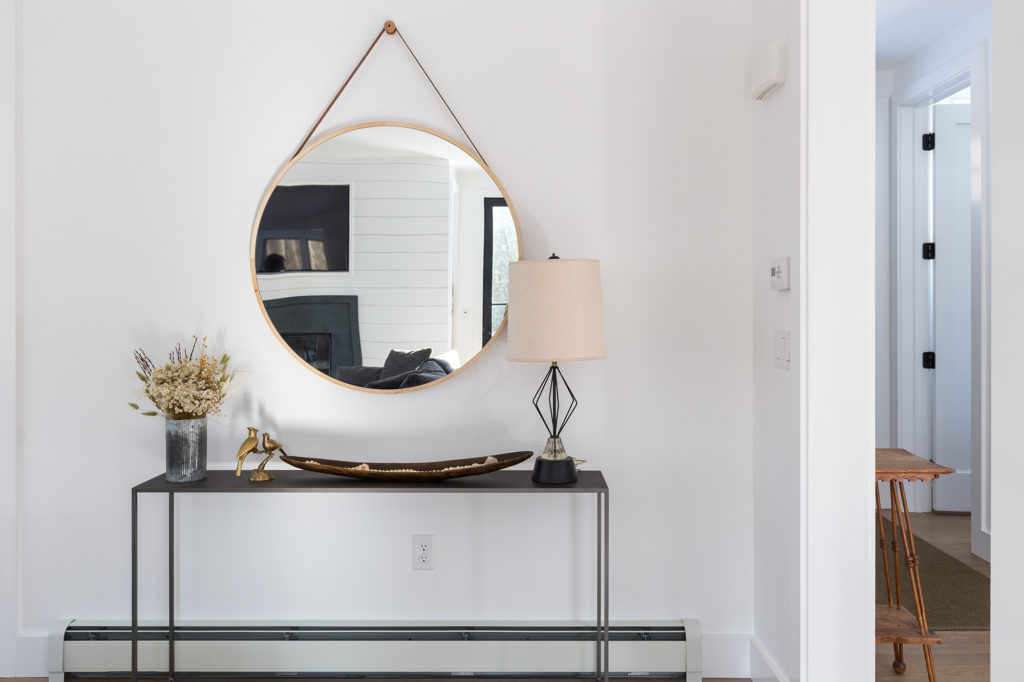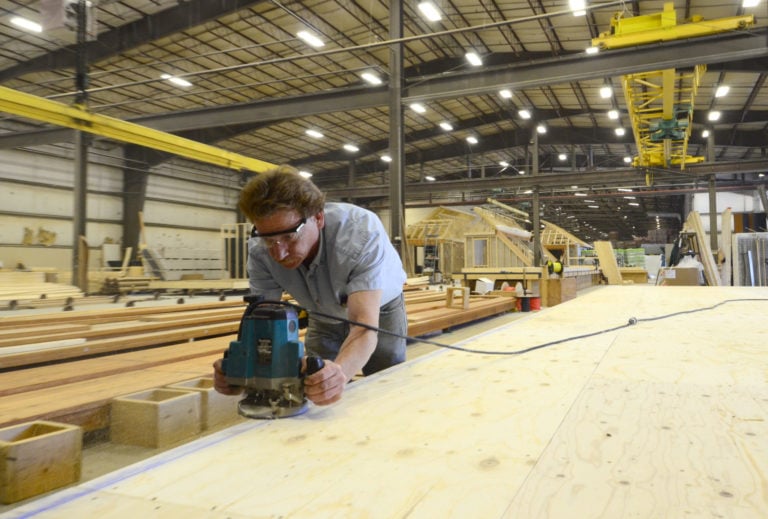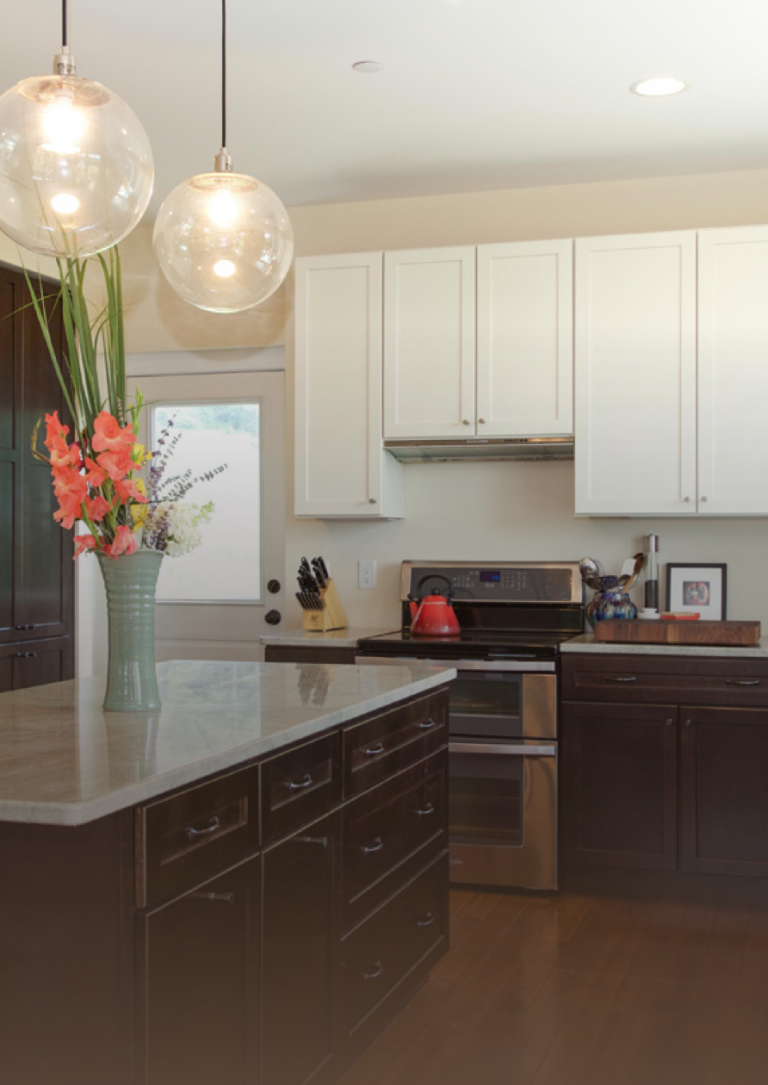When you choose TruHome, you’re getting a home that’s already been figured out by professionals who, over the course of 42 years, have been there, troubleshooted that. A TruHome has been problem-solved and fine-tuned to offer a home with more expensive features for less. That’s because it’s a cost-effective, repeatable process with materials and fixtures we can keep in stock.
TruHome is a great fit for empty-nesters looking to downsize, young couples who want a better quality home than they might otherwise be able to afford…or anyone who wants a long lasting, durable home that’s ready for building when you are.
Most of the finishes in a TruHome have been pre-selected with partner Vendors. See here for standard TruHome specs. We do have a few upgrade options:
- All-hardwood or tile floors
- Hardwood stairs
- Tile showers
- Standing seam roof
- Granite kitchen countertops
- Granite and quartz vanity tops
- Dettson Chinook heating system
- Walkout basement
We can also add porches, decks, and garages.
We allow some site modifications to a TruHome. It can be flipped, we can swap locations of existing windows and doors, and we can add windows as long as it doesn’t significantly impact the design or sizing of the mechanical equipment.
A TruHome is pre-packaged. The floorplans, building envelope, and finishes have already been determined and they’re ready to go. Building a Stock Home is more like a “choose your own adventure” experience. You start with one of 75 stock floorplans, and choose your finishes from a robust list of available options.
Any builder can be hired to build any product—we all build with studs, sheetrock, and cabinets. But Huntington Homes’ approach is to leverage off-site construction to drive value to you. We translate some of this value into upgrades in finishes, building envelope, and mechanicals. Because our shop-built homes are more predictable overall (a streamlined process and controlled environment unaffected by weather), they can be built for lower cost.
We often hear (good) local builders quoting homes in the $300 – $400/sf range. A TruHome is +/- $250/sf. When you calculate figures on a 2,000sf home that is a $50,000 – $300,000 difference.
Modules with Set Crew is where we supply the module components for your project, and you work with a local General Contractor for all site work and onsite “button-up” phase. A Modules with Set Crew package is available anywhere we build.
Turnkey is where Huntington Homes acts as the full General Contractor from start-to-finish. Turnkey Packages are available in Northern Vermont and the Upper Valley of New Hampshire.
We have worked really hard to keep quality high and costs down on a TruHome. Our team has value engineered the designs, and worked with our vendors to select quality products.
A Modules with Set Crew Package will run $150 – $170/sf depending on model. This assumes normal delivery (ie, not an Island). See the attached links for TruHome Specs in a Modules with Set Crew Package, and also Scope of Work / Responsibilities of the onsite Contractor.
A Turnkey Package will run $230 – $260/sf depending on model. This assumes normal delivery (ie, not an Island). See attached TruHome Specs in a Turnkey Package.
While there are many definitions of green, TruHomes are deliberately designed with consideration for embodied energy and future energy use. As we curated our materials, we eliminated plastic and vinyl where possible. Many interior materials are recycled and/or low-VOC. Wherever possible, we’ve tried to source US made building products (sheetrock, insulation, trim, millwork, flooring).
The mechanical systems we use for TruHome, while not low-load, are fossil fuel-free. For homeowners who want to lower their carbon footprint (as low was Zero Net Energy), TruHomes are solar panel ready.*
*There is a tipping point where more solar panels are less expensive than more insulation.
Modular homes, in general, do not appraise differently than site-built homes. And more frequently, we’re seeing Home Energy Rating System (HERS) Index scores making their way into real estate listing sheets. These scores rate a home’s energy efficiency and give prospective buyers a way to assess and compare future energy use. A TruHome will generally have a high rating and can have a perfect HERS score if solar panels are added.


